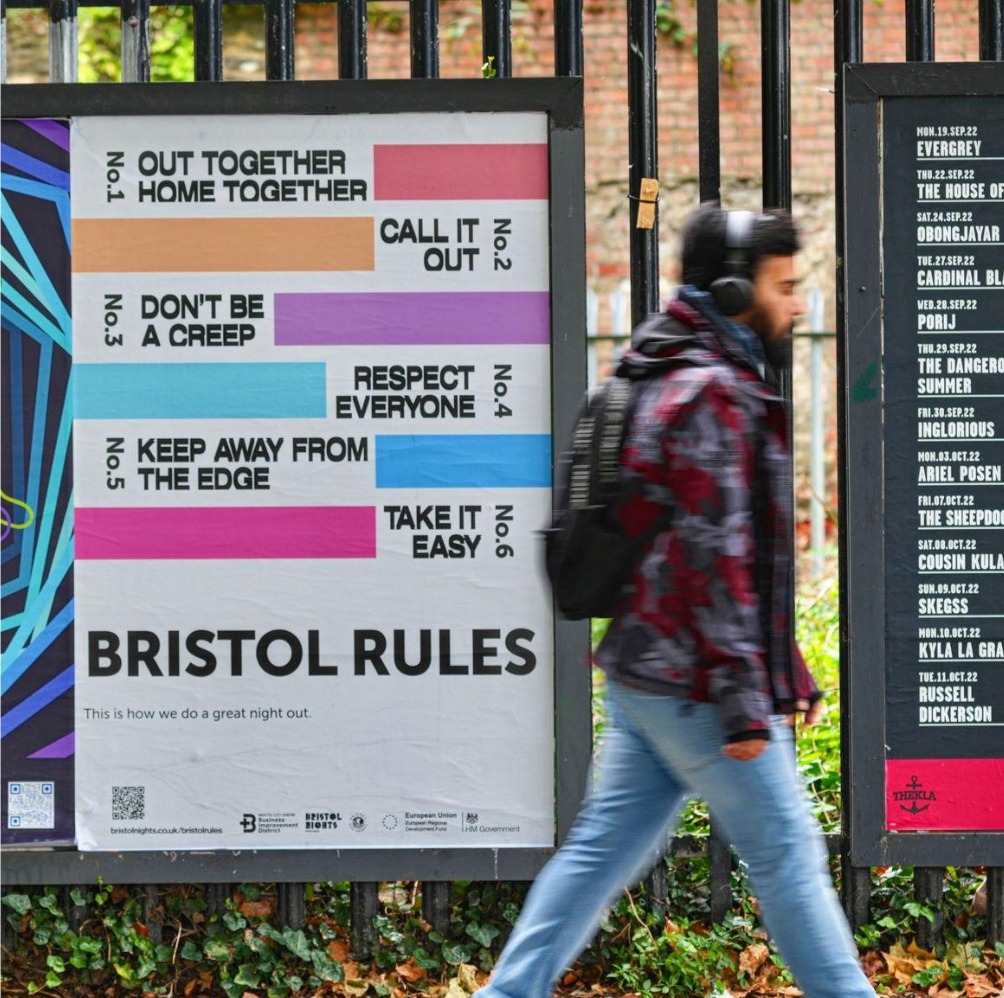Stadt Nacht Acht: What can cities learn from clubs about safety?

At the bi-yearly Berlin conference Stadt Nacht Acht, we explored possibilities for safer cities and examined the inspiration that can be drawn from clubs for urban safety. In the panel hosted by VibeLab this year, the moderator role belonged to a Writer and a DJ, Anjali Parshar-Savoie.
As for panellists, we were joined by VibeLab‘s lead researcher, Diana Raiselis, Amsterdam’s Hosts Coordinator, Nourdin Zobair, and Bristol’s Night Time Economy Advisor, Carly Heath.
The main aim of the debate was to think of ways to ensure better safety for our cities at night outside of the clubs and venues. What lessons can we learn from club cultures operating at night and being deeply involved in community well-being, and how can city councils and officials integrate their methods and enthusiasm?
Buddies that are ready to help you
Nourdin Zobair, the coordinator of Hosts from Amsterdam, introduced their project, where young people cruise the city and use a friendly approach to handle minor issues and disturbances on the streets, similar to the awareness teams or night managers in clubs.
“Hosts act as a link between the police, the city, and law enforcement. They are individuals like you, without uniforms and with a smile on their faces. They roam the streets at night, observing anything that might raise concern. When they notice something, they kindly approach you, ask you about your night, and then advise you on what to do or not. People respond positively to them because they see them not as troublemakers but as buddies trying to prevent potential trouble with the police.”
Explained Nourdin.
Since the Hosts project was first introduced in Amsterdam, criminality has significantly decreased, resulting in fewer police interventions and overall happier cities. Hosts guide you through the night, intervening when necessary but offering help or support when needed. Hosts project is a great demonstration that is adopting the night management and awareness approaches from clubs can bring your city a positive change.
Pamphlet dance culture lives on in Bristol.
Carly Heath from Bristol shared another interesting approach her city adopted from the dance subculture. Pamphlets, posters, and flyers used to be the primary communication channels within the club cultures worldwide, and they worked well. Similarly, with the same efficiency, House rules written on the wall proved to be an effective way to protect our communities from outside and within.
Bristol took inspiration from these cultural artefacts to make the whole city feel safer and not just independent venues.
“We were concerned about opening nightlife again after 18 months of Covid and wanted to do it safely. So we created this poster campaign called “Bristol rules”, which is simple. It worked amazingly, and it was well-adapted. University parties, for example, used the agreement to the rules as a condition on buying tickets,”
Carly explained.
People liked what Bristol did, only briefly after other campaigns inspired by club culture raised in the city. Glowing murals on the wall informing you that what is unwanted is wrong or posters reminding you just to look out for your buddy became part of the Bristol urban space.
